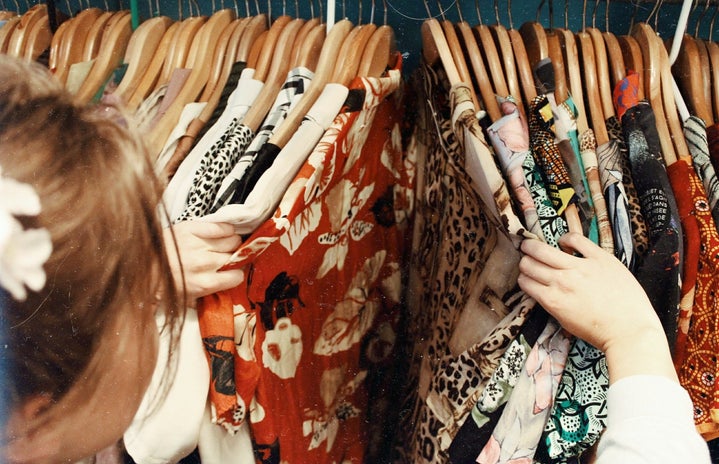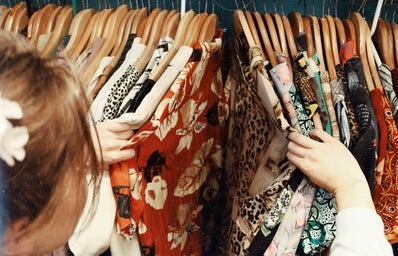First coined by the New York Times in the 90s, ‘fast fashion’ was initially used to describe Zara’s mission to employ a two-week window between design and sale. A replication of recent trends, mass production at low costs, quick lead times and voila, you have the machine that is killing our planet one online basket at a time. If we fast forward to today, the likes of Zara and H&M seem almost trivial in comparison to the new kid of the block, Shein. The Chinese online retailer has taken both the fast fashion industry and levels of consumer consumption, or should I say overconsumption, by unmatched storm. In fact, in 2021 Shein surpassed Amazon in terms of global app downloads and in April 2022 an evaluation of $100 billion secured Shien’s place as the world’s third most valuable private company, behind TikTok’s ByteDance and Elon Musk’s SpaceX. This commercial success is, however, the force behind vast amounts of pollution, overconsumption and waste, as well as the mistreatment of workers on Chinese assembly lines.
‘Wear once, buy some more’
In a time of digital sophistication, companies play psychological games with their customers – and Shein is winning. With social media marketing strategies and algorithms, free advertising has never been so easy. By following a method of ‘test and repeat’, which allows for upwards of 10,000 items to be manufactured daily, Shein recruits what Iman Amrani calls ‘micro influencers’ to promote their brand. If you’re on TikTok, Instagram or virtually any Influencer heavy platform you will have seen a #Sheinhaul. This trend sees thousands of young women emptying plastic bag after plastic bag of individually wrapped clothing to their audience of thousands online. Not only does this pose a lethal environmental conundrum, while glorifying ideals of over-consumption and the idea that clothes are disposable, it creates a buzz and further promotes Shien’s brand, as in most cases these girls are dumbfounded by Shien’s prices.
What simultaneously gives Shein their USP and does the most harm environmentally is their cheaper than cheap prices. Some of their clothes are a mere tenth of the price of their nearest competitors, with clothes going for under a fiver. It is these ridiculously low prices that pose the biggest threat to the environment, with low prices enabling an attitude of wear once and then buy some more, clothes are thrown away and the cycle replenishes itself. As Dilys Willams says, ‘designed for obsolescence, destined for landfill.’ Furthermore, Shein does issue refunds, but does not take the clothes back to resell as this would actually be more expensive for them, thus waste ensues. Despite the ubiquitous presence of fast fashion, there are a number of environmentalists who choose to shop from retailers that can prove a green production line, or better yet, second hand. However, as the Channel 4 documentary ‘Inside the Shein Machine: UNTOLD’ shows, companies who recycle are left to sell a large amount of donated Shein, but as their low prices mirror their quality, these garments become obsolete and are put in landfill regardless of green friendly attempts. These dirt-cheap prices also make us ponder how much are garment workers manufacturing these clothes paid.
Exhaustive hours and barely there income
In today’s era of scrutiny, in addition to their unusually low markups, it is no surprise that Shein’s ethical standards have been put under the microscope. Just as TikTok has been a vehicle of promotion for Shein, it has also criticised the company for the exhaustive work pace required by their employees on production lines, with rumours circulating in June that items has been delivered with the words ‘help me’ and ‘need your help’ written on clothes tags. While these rumours were never proven or debunked, even more unnerving are the findings from the Channel 4 documentary: Inside the Shein Machine: UNTOLD. Iman Amrani’s and her associate’s investigations found gross negligence and exploitation of Shein’s own code of conduct, which states that its practices align with Chinese labour laws. Undercover footage revealed that the take-home pay for a garment worker was reliant upon the speed of production, with one piece worth 0.14 Yaun or 2 pence. This exploitative business model means that more often than not these workers are earning less than the Chinese legal minimum wage. On top of this, Chinese labour allows allow for a maximum of 40 hours per week for workers, but Channel 4 revealed that 18 hour days are frequent, with employees receiving one day off a month.
It is this lack of transparency between supply chains and consumers that allows for exploitative and unsafe working conditions to ensue. While Shein is obviously not the only fast fashion brand that conducts itself in an exploitative and disposable manner, its increasing popularity is only allegoric of the encroaching destruction that the fast fashion industry has on our planet and the exploitation of those in vulnerable positions.

